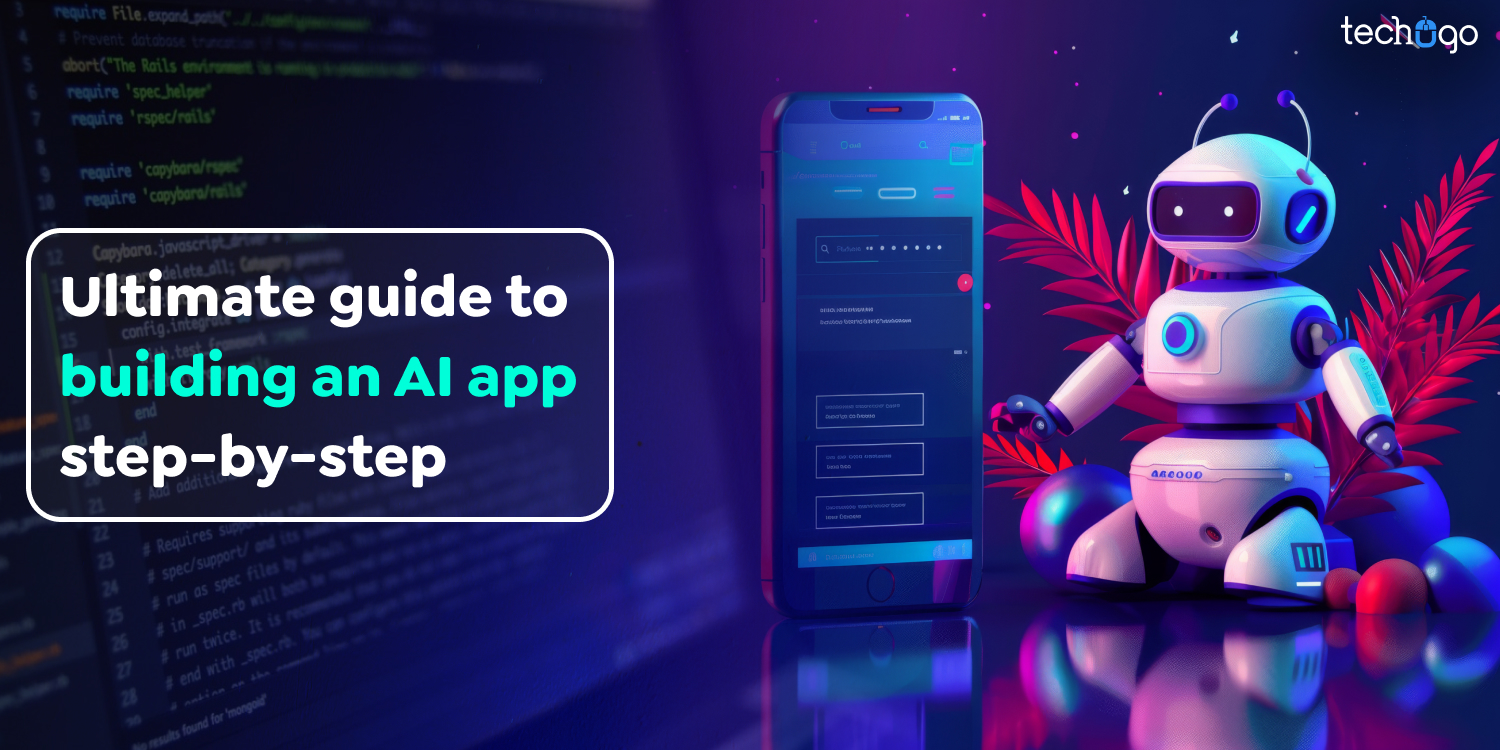15 Oct 2024
Renewable Energy Software: Transforming the Future of Sustainable Energy Practices
Matthew Connor
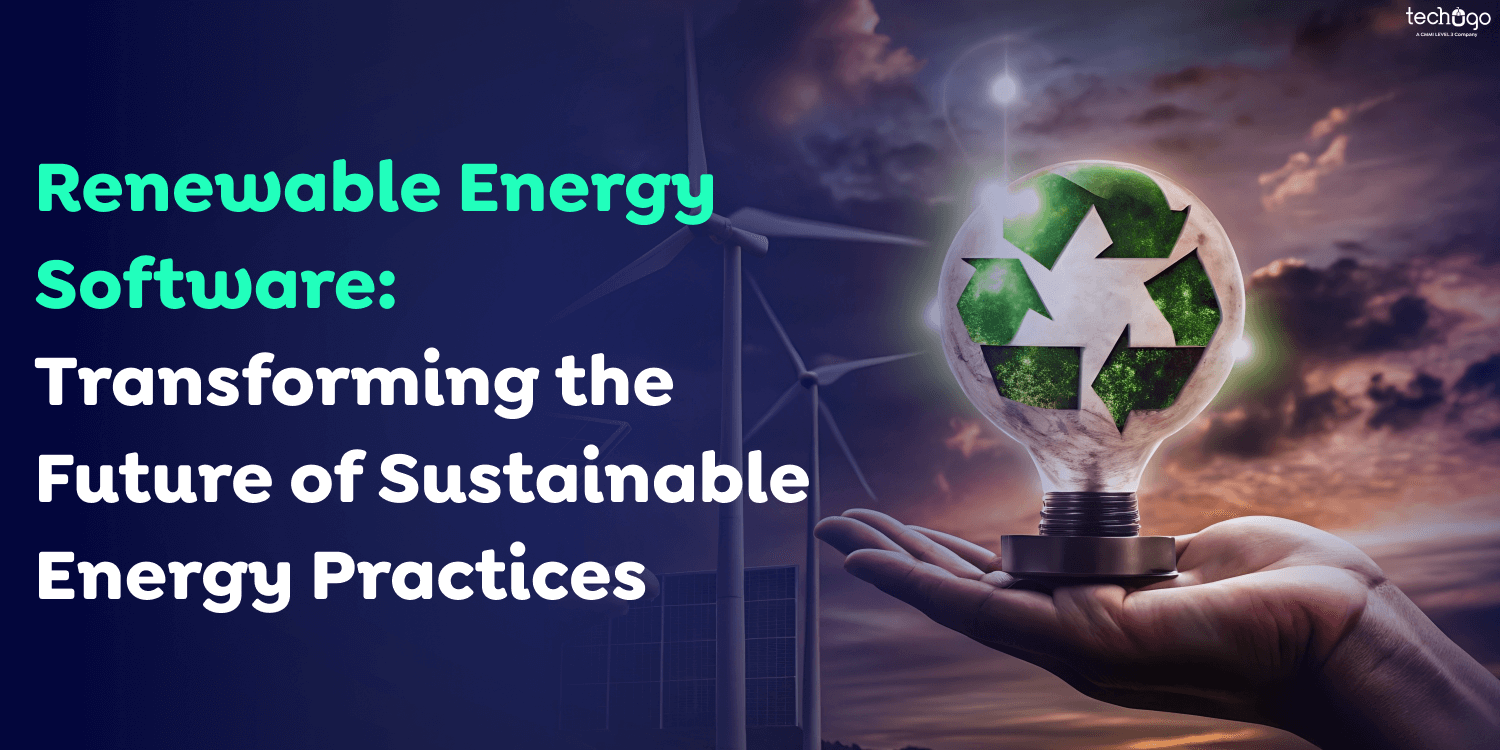
Effectively managing renewable energy infrastructure demands special software. However, many organizations struggle to integrate data sources using various formats as illustrations. Other issues are inefficient and obsolete technology, which can create a confusing user experience and compatibility problems. Software for managing renewable energy can improve load balancing, decrease the environmental impact, and streamline resource management. The software also improves data analysis, reporting and solidifies many operational chores.
The renewable energy sector is the next phase of energy generation. It can provide many advantages, like reducing carbon dioxide emissions, enhancing energy sources, and generating new industries and jobs. Developing renewable energy software isn’t easy to accomplish. It takes excellent technical expertise, imagination, and problem-solving capabilities. You may be trying to figure out how to meet the issues arising from developing software for renewable energy.
This blog will discuss how to create renewable energy software and its importance.
So, let’s get going.
What Is Renewable Energy Software?
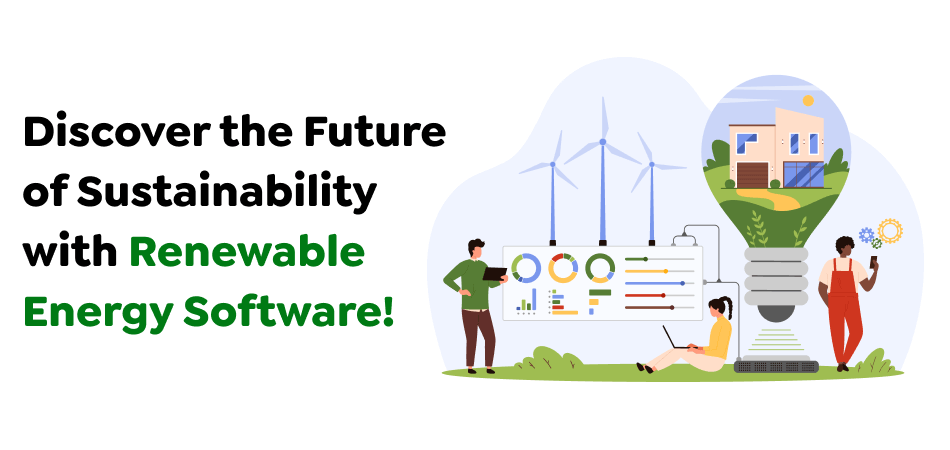
Renewable energy software development encompasses creating, deploying, and supporting solutions tailored to specific requirements in the green energy market. These solutions rely on data, analytics, and automated processes to improve production, enhance operational efficiency, and spur innovations across the value chain.
Now let’s have a look at the key components of renewable energy software:
1. Energy Management Systems (EMS)
EMS platforms allow continuous monitoring, control, and optimization of renewable energy sources, including wind turbines, solar panels, and hydroelectric generators. They help operators increase energy efficiency, reduce the time between failures, and ensure the grid’s reliability.
2. Predictive Analytics
Predictive analytics algorithms use both real-time and historical data to anticipate energy production markets and demand. Using machine learning and AI, these tools facilitate proactive decision-making, asset optimization, and risk management.
3. Remote Monitoring And Control
Software for remote monitoring and control allows operators to observe, diagnose, and manage renewable energy sources online anywhere in the world. This feature improves efficiency, reduces maintenance costs, and boosts asset efficiency.
4. Grid Integration Solutions
The solutions ensure grid stability, regulate demand and supply, and improve energy flow to maximize the use of renewable energy sources.
Also Read : Transforming Operations: The Role of Oil and Gas Software Development
Types Of Software Solutions In Renewable Energy
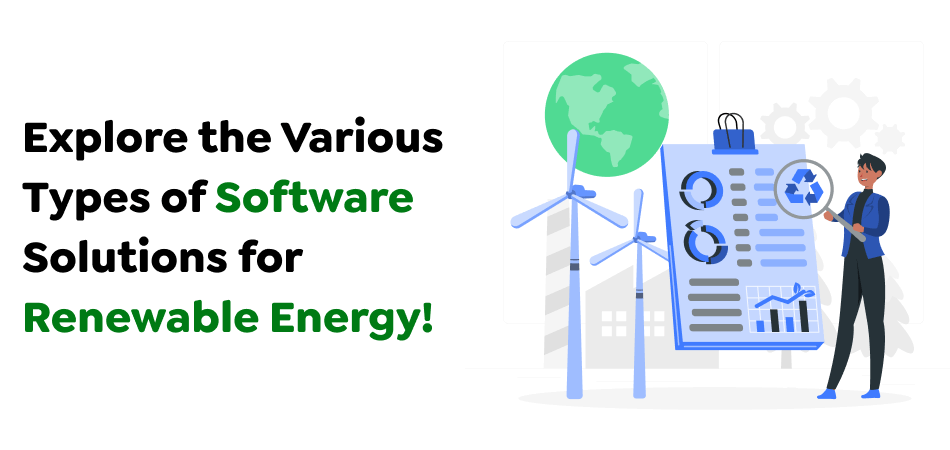
We’ve now explored the benefits of creating these kinds of software; let’s look at innovative software solutions pushing the field of renewable energy forward.
1. Simulation And Modelling Software
This software is crucial for designing and testing renewable energy systems before they’re constructed. Engineers can use it to model diverse conditions and improve system performance and reliability. It also allows for modeling the way solar panels perform with different weather conditions and understanding the aerodynamics of the blades on wind turbines.
2. Grid Management Software
Because renewable energy sources such as wind and solar are not constant, grid management software is essential for creating a steady energy supply. It regulates energy flows from different energy sources, balances supply and demand, and helps administrate energy storage.
3. Data Analytics And IoT Integration
This software is developed to analyze information from renewable energy systems to discover trends, boost efficiency, and lower costs. It can forecast energy production, optimize resource allocation, and forecast maintenance requirements. For example, a hydroelectric power plant can use an analytics system to analyze the water flow and optimize electricity generation while ensuring minimal environmental impact.
4. Blockchain For Energy Trading
Blockchain technology is increasingly used to trade energy between peer-to-peer parties within the renewable energy industry. For instance, it allows homeowners with solar panels to market surplus energy to neighbors directly, creating a decentralized and effective energy market.
5. Grid Integration Software
Because renewable energy sources tend to fluctuate, their integration into the electric grid will require complex software. This program manages the power flow from renewable sources and helps ensure the grid’s reliability and stability. A typical utility business utilizes grid integration software to handle the surge of solar power throughout the day and balance the energy source with other sources to ensure steady power supply at all times.
6. Geothermal Exploration Software
The toolset can tackle major geotechnical problems and reduce risks associated with exploring geothermal energy. It includes data-driven solutions to reservoir knowledge, plant design and operation monitoring, and project management.
7. Bioenergy Supply Chain Optimization
The software improves plant efficiency by optimizing the management of material flow and inventory control, as well as accounting and reports. This means that significant participants in the bioenergy and circular economy, such as manufacturers of recycled materials and energy and waste management companies, can improve efficiency, ultimately slashing 30% on the cost of managing the supply chain.
8. Compliance And Reporting Tools
With the current emphasis on sustainable development, using software to help comply with environmental laws and reports has become increasingly crucial. The tools allow companies to track and document their carbon footprint and compliance with environmental guidelines.
9. Remote Monitoring Software
Remote monitoring software can be an essential instrument in renewable energy. By integrating Internet of Things (IoT) technology for device connectivity, as well as data management and analysis, it allows for the monitoring and management of renewable energy sources, enabling swift adjustments and issue resolution to ensure smooth and efficient operation.This popularity has grown due to its efficiency in directing the renewable energy process and maximizing its efficiency.
Also Read : Building Information Modeling Software: A Game-Changer for Modern Architecture
Reasons To Invest In Building Renewable Energy Software
Imagine a world in which hand-to-hand interactions and site visits are eliminated, and problems are identified and dealt with promptly to ensure minimal downtime and the highest energy production. This kind of future is not at all possible. Still, it is now possible due to the revolutionary power of renewable energy software.
This is a quick overview of the positives of renewable energy software development:
1. Innovation And Leadership
Renewable energy software providers are frequently considered trailblazers for sustainable development and technological innovation. Their pioneering work in this sector opens new opportunities and draws customers who value sustainable practices.
2. Collaborative Opportunities
The renewable energy software offers a great opportunity to collaborate with various fields, from different academic circles to public agencies. These collaborations can help develop innovations and offer new perspectives on a business’s Research and Development (R&D) actions.
3. Enhanced Reputation
Companies that create software for renewable energy are seen as reputable and socially conscious. This can greatly aid in increasing customer loyalty and attract investors who are focused on sustainability.
4. Competitive Edge
Within the renewable energy sector, advanced software tools could give you a significant competitive advantage. They boost efficiency, reduce costs, and provide unique solutions to renewable energy initiatives, separating an organization from its peers.
5. Asset And Resource Tracking
Using sensors and internet technology, you can efficiently track and manage the different assets and resources on interactive dashboards and make insight-driven choices that affect your business operations, resource use, and costs. Cloud-based cloud services allow users to quickly expand their technology and tracking capabilities when their portfolio and infrastructure expand.
6. Predictive Maintenance
Modern forms of data analytics have become increasingly sought-after in developing software for renewable energy. Based on AI technology and forecasting algorithms, the latest technologies help predict the likelihood of equipment breakdowns and optimize the maintenance schedule and cost by anticipating possible issues before they can cause disruption.
7. Better Energy Assets Management
Renewable energy software can be better integrated, allowing better administration of renewable energy resources. Centralizing information from several sources, such as wind turbines, solar panels, or energy storage devices, provides a clear picture of their operation.
8. Long-Term Profitability
As the demand for energy from renewable sources increases, so does the demand for software to support it. Investments in this field will guarantee long-term benefits as more businesses shift to sustainable methods.
9. Regulatory Compliance
Engaging in proactive software development based on renewable energy could help companies strategically prepare for regulation modifications. This method helps adhere to new environmental laws and can prevent penalties or fines.
Also Read : Understanding the Significance of AI in the Energy Sector: Key Benefits and Use Cases
Key Features Of Renewable Energy Software

Software solutions for renewable energy offer an array of capabilities and features that help firms working in the renewable energy industry. This includes:
1. Monitoring And Analytics In Real-Time
Real-time business data and sophisticated analytics enable companies to spot trends, irregularities, and potential problems, making it easier to make proactive decisions.
2. Maintenance And Management Of Assets
This allows businesses to control and manage their renewable energy assets efficiently. Centralizing data from different sources provides complete asset management maintenance schedules and optimizes performance.
3. Planning And Forecasting Of Resources
It assists businesses in optimizing their energy usage and ensures the best utilization of resources. Accurate forecasting tools allow companies to design their plans for the best energy storage and generation.
4. Reporting And Compliance
Software applications can be used to automate the regulatory compliance process, ensuring that firms meet their reporting obligations. Software solutions can also assist in the administration of management, maintaining transparency and accountability.
5. Integration Into Smart Grids
The software can help companies integrate with smart grids and energy storage systems. It opens possibilities for participating in demand response initiatives, efficiently managing their energy usage, and finding additional income-generating opportunities.
Also Read : How Energy Trading Software Simplifies Risk Management and Compliance
Process To Develop Renewable Energy Software
Below are some steps to create software to support renewable energy businesses and projects.
1. Decide The Domain And Needs Of The User
The very first step in developing any software project is understanding the industry as well as the requirements of the end user. The development of software for renewable energy isn’t any more or less the same.
It’s essential to be aware of the type of renewable energy system you’re developing, its functions and capabilities, and who will be the final users. It is also possible to identify the most essential features. It functions the software must offer along with the interface and experience your program should provide.
2. Make Sure You Choose The Best Technology And Tools
The next stage in developing software for renewable energy is to pick the best techniques and tools to implement the project you are working on. Choosing the frameworks, programming languages, libraries, platforms, and other tools most suitable for your requirements and preferences is essential.
Interoperability and compatibility of tools and technology in the renewable energy system and the components. It is essential to check that your application will communicate and work with the equipment and software that comprise renewable energy systems and other third-party systems and services.
You must ensure that the software you choose to use can cope with the huge volume and speed of transactions and data that this renewable energy infrastructure produces and processes. You must also ensure that your program can change and evolve to meet the evolving requirements of the energy industry and its users.
3. Development
When you are satisfied with the plans and the development plan, the front-end and back-end developers begin turning your ideas and specifications into an enticing product. This entire development process can be broken down into short cycles to provide specific information regarding which tasks have been completed and the projects you’re currently developing and swiftly respond to any suggestions you receive.
4. Quality Assurance And Testing
Every feature that we’ll include in the software will undergo unit tests (to verify that the various modules are working as expected), integration tests (to check for issues when the modules work together), and evaluation at the end of every cycle.
Quality assurance specialists of the software development company will also oversee the development process to ensure that the final software conforms to quality standards and with renewable industries or any other required regulations. When the development phase is complete, you can conduct a thorough test on the finished product to ensure you get the best product that’s as error-free as possible.
5. Post-Launch And Implementation Support
When the renewable energy software has passed tests and quality assurance, it will be deployed. When the software has been installed, examine its performance and then provide regular assistance. This ensures that the software is continuously updated and in sync with the requirements for the energy-renewable initiative.
Also Read : The Complete Guide to POS Software Development: Types and Benefits
Use Cases Of Renewable Energy Software
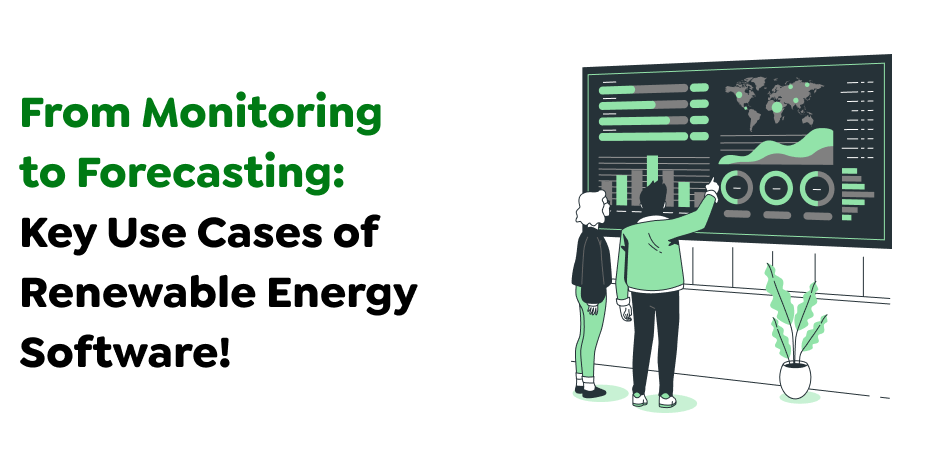
Let’s examine a few use cases that show how software could help support the renewable energy sector.
1. Wind Farm Management System
Implementing cutting-edge wind farm management software uses data analytics and machine learning. The software constantly monitors turbine performance, wind speeds, and grid demands by automatically altering turbine settings for maximum energy production. The software’s predictive abilities also let the administrator predict maintenance requirements and plan maintenance, which ensures the reliability and efficiency of energy production for the island’s community.
2. Solar Energy Optimization Software
The software automatically adjusts the orientation and tilt of solar panels to get maximum sunlight all day, increasing energy production by 20%. This means that the business was able to supply residents and local businesses with a more sustainable and reliable energy source.
3. Energy Trading Platform
Renewable energy producers had difficulties monetizing efficiently their surplus energy produced in an energy market that needed to be regulated. The platform offers renewable energy producers access to market information in real-time, energy pricing trends, and demand forecasts. It optimized trade strategies in the energy sector by using machine learning, predictive analytics, and even predictive models.
It also allowed producers to market their surplus energy at a competitive price. In the end, renewable energy producers can increase their earnings while helping to facilitate the integration of renewable energy sources in the grid. Its easy-to-use interface and easy-to-use design have also made it easier to conduct effortless transactions and cooperation among traders in the energy market, increasing efficiency and transparency within the energy market.
4. Hydroelectric Power Plant Optimization
Hydroelectric power plants can maximize their operations for maximum energy output and minimize environmental impacts. The plant implements complex software that combines live data from sensors placed throughout the facility. The software analyzes reservoir flow levels, water rate levels, and turbine efficiency to maximize the plant’s operation in real-time. By dynamically altering the turbine’s settings and water flow, it achieved a 25% increase in power output while also minimizing the environmental impact.
Also Read : Driving the Future: A Comprehensive Guide to Automotive Software Development
Key Factors For Selecting Renewable Energy Software Solutions
Businesses must be aware of how to choose software that is compatible with their current infrastructure, tools, and workflows.
1. Interoperability
The software must be integrated with IoT devices and other technology to enhance their capabilities. In the absence of this, businesses run the risk of creating data silos which contain information that is not accessible across various devices. Interoperability allows you to access all your ire icons to analyze how to comprehensively handle and age your your-producing assets.
Software that manages renewable energy must handle growing volumes of data generated by sensors, trackers, and even users. Businesses typically prefer cloud-based technology that uses autoscaling to optimize computing power based on user use since it allows them to keep performance stable and eliminate excessive IT expenses. However, specific government organizations need a secure environment.
2. Support For Cross-Platforms
Employees should be able to use energy management software on a variety of operating systems with mobile and website interfaces. The availability of multi-platform platforms means that employees can be aware of energy systems and receive notifications about the system’s condition from anywhere.
3. Sustainability
The software for renewable energy must be in line with environmental objectives that include cutting greenhouse gas emissions, preserving resources, and eliminating waste. In addition, it will increase employee efficiency. The solution achieves these goals through an automated and precise monitoring system and forecasting.
4. User Experience
The software should convey essential data to business owners yet make it easy for employees who are not tech-savvy. It should display information in various formats, such as charts, dashboards, tables, and maps. The most intricate spatial data and wind-related resources must be presented on interactive maps.
5. Blockchain Technology
Businesses may use blockchain technology to facilitate energy trading. The technology stores transactions in a decentralized, transparent system, allowing for information exchange between different parties in the grid.
6. Budgetary Constraints
Consider the total cost of ownership for software. Consider upfront and long-term expenses in addition to maintenance and payment expenses. Also, it is important to think about the costs of training staff, compliance, and execution (e.g., licensing fees, software upgrades, and the cost of hardware upgrades).
7. Secure Data Transmission
Data security is necessary in handling personally identifiable data, such as contract and service documents. Software should be designed to incorporate enterprise-grade encryption methods for data moving through the network, robust authentication systems that allow for role-based access, and compliance with the privacy laws of the jurisdiction in which you operate.
Also Read : How Offshore Software Development is Shaping Global Business Growth
Challenges In Renewable Energy Software Development
The renewable energy industry faces many challenges, big and small. However, the obstacles will be addressed with the development of software for renewable energy. One of the biggest issues for renewable energy is that it has to always be accessible. The generation of wind and solar energy is dependent upon weather conditions. This makes it essential for companies to have accurate forecasting and resource-planning capabilities.
Another issue that the renewable energy industry faces is the complicated regulatory environment. Understanding and meeting the requirements of regulatory agencies and changing policies could be difficult for businesses in renewable energy. Software solutions can assist companies in automatizing reporting and documenting procedures.
Finally, effective storage and transmission technologies remain the biggest problem. An uninterrupted and reliable energy supply is vital. Software applications that maximize energy storage and allow seamless integration into grids will help overcome this issue and increase the use of renewable energy sources.
Best Practices In Renewable Energy Software Development
To ensure the success of green energy software development, Businesses should follow these guidelines:
- Define the objectives of the project to develop software. This will help guide the process of developing and help ensure that the project is in line with business requirements.
- Participate in all stakeholders relevant to the development process. That includes renewable energy experts, IT professionals, and end-users. Feedback and input are essential to long-term success and the development of new technologies.
- Software solutions for renewable energy must be built to handle the business’s future expansion and evolving needs. Flexibility and scalability are crucial to ensure the application’s long-term viability and efficiency.
- Utilize the Agile approach, emphasizing communication, feedback, iteration, and collaboration. This allows you to create software solutions that satisfy users’ requirements and adapt to changing demands and issues in the field of renewable energy.
- Renewable energy software manages sensitive information, including energy production and consumption information. Install robust security precautions to guard this data against unauthorized access and cyber-attacks.
- Test the software regularly during development and then iterate based on user feedback. This method of iteration ensures that the solution you choose to develop matches your business’s expectations and requirements.
Also Read : Unlocking Success with Nearshore Agile Development: A Comprehensive Guide
Future Of Renewable Energy Software Development
One of the significant developments is the combination of machine learning, which enables advanced analytics, predictive maintenance, and autonomous operation, further optimizing energy management and production.
Another trend is the creation of solutions based on blockchain technology for renewable energy businesses. Blockchain technology will increase the transparency, traceability, and trustworthiness of renewable energy transactions, allowing businesses to confirm renewable energy sources and trade green energy certificates securely.
In addition, the concept of energy communities is beginning to gain momentum. Software solutions for renewable energy can aid in the development and management of energy communities in which individuals and businesses can collectively produce, trade, and consume green energy. In addition, they empower local communities. The peer-to-peer model of energy sharing can help reduce the global carbon footprint.
Key Takeaways
Renewable energy software plays an essential role in renewable energy and is a major driver in the development of green energy. As sustainable energy challenges and a changing climate become more challenging, software’s importance will become more crucial. Maximizing the effectiveness and power of renewable energy sources like solar, wind, and hydropower is crucial.
In addition, new and exciting sectors within this sector emerge with green liquid hydrogen, waves swell energy, and new biofuels. There are many reasons to believe that the coming decade will be very exciting for those who create software designed to support renewable energy businesses and the energy industry. While this software continues to change, evolve, and improve, it’ll be a significant factor in helping us move towards a more sustainable environment heavily dependent on renewable energy sources.
Get in touch with Techugo today to explore innovative renewable energy software solutions tailored to optimize your business and drive sustainable growth!
Get In touch
We are excited to here from you and let’s start something special Together. Call Us for any inquiry.
Write us
sales@techugo.caJust a call away
About you

